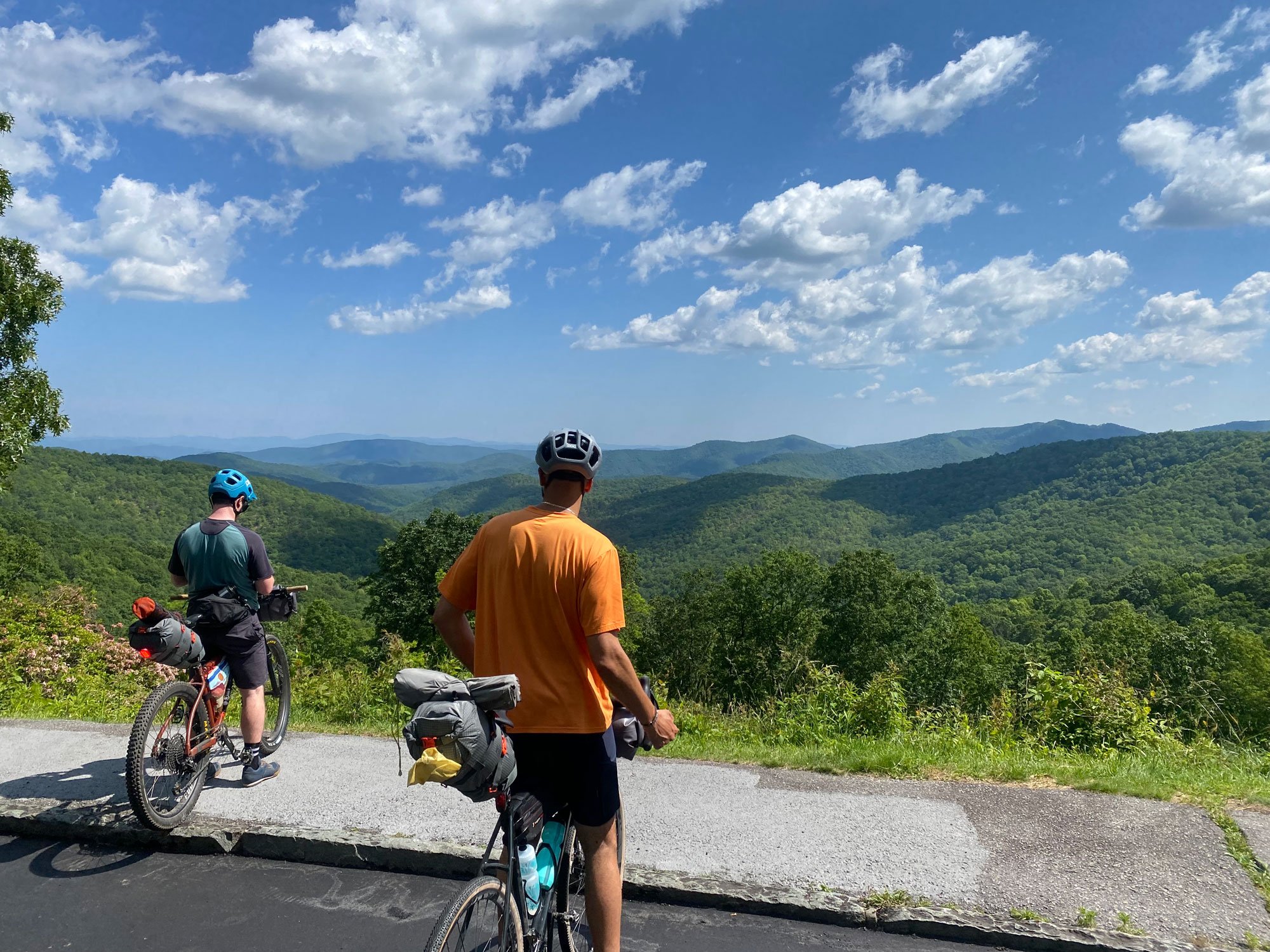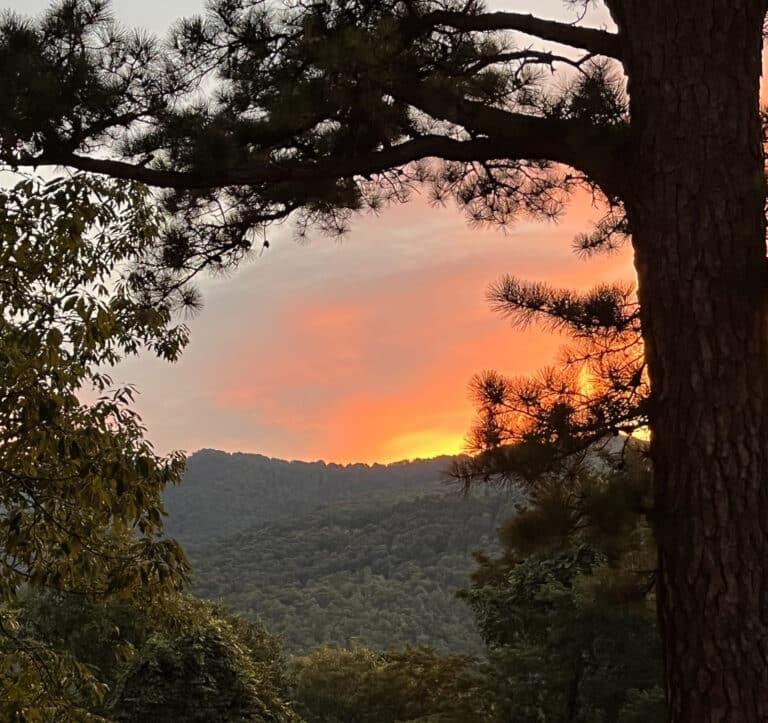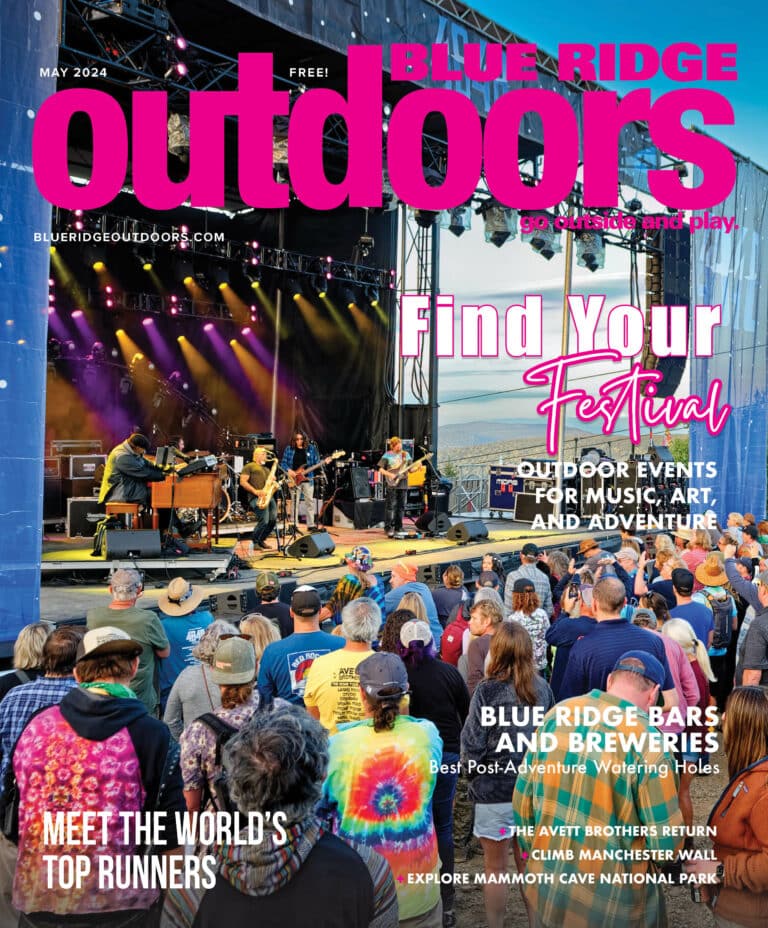FUN FACT ABOUT FIREFLIES: they’re carnivorous during the larvae stage, but most turn into vegetarians when they get older, living off of nectar and pollen. And then there are some that don’t eat at all. They just exist to procreate. To quote one of the most enlightened bands of the ‘90s, Limp Bizkit, they “did it all for the nookie.”
I didn’t know this fact the other night when the lightning bugs popped up around my campsite, where I was resting after a long day of riding bikes through Pisgah National Forest. I was camping with two guys from Seattle, and it was their first time ever seeing the glowing insects. They were in awe of the little creatures, taking videos for their wives back home and throwing insightful questions at me as the bugs flickered around us.
“How long do they live?”
“What’s their geographic range?”
“How can you tell the different species apart?”
I didn’t know the answer to any of these questions at the time, so I just said, “I don’t know,” or “that’s a good question,” when they lobbed their queries at me. It had been like this for two straight days—the two of them asking me questions about the flora and fauna surrounding us, and me saying, “I don’t know.”
We were in the midst of a three-day bikepacking trip through Pisgah, riding a combo of gravel and the Blue Ridge Parkway, piecing together reasonable 30-mile days and camping at established campgrounds along the way. It was a big loop taking in some of the highlights that I thought these two West Coasters might appreciate—Looking Glass Overlook, Sliding Rock…Touristy stuff that always impresses. I designed it to be a beautiful entry to road and gravel touring in these parts.
I like riding bikes, especially multi-day routes, with new people. The miles of pedaling and occasional hardships of bikepacking give you a lot of opportunities to get to know someone. In this instance, I learned that one of my new friends is allergic to carrots—he had to pick them out of his freeze-dried backpacking meal. I learned there are certain people in the world who stake out their tent before attaching the poles. Weird, right? We spent three days pedaling through the woods, getting to know each other by arguing about the superiority of bidets over toilet paper, comparing road trip playlists, and trading backpacking meal recipes.
It was their first time in the Southern Appalachians, and it was fun to watch them ogle the scenic views from the Blue Ridge Parkway or admire the impossibly green and lush forest that surrounded us on lonely gravel stretches. And they were truly impressed by the terrain, marveling at the big, granite thumb of Looking Glass Rock, which looks like a mistake in all that greenery, and taking countless pictures of the rolling peaks from every overlook on the Parkway. I always enjoy introducing new people to the Southern Appalachians—seeing the mountains through their eyes gives me a greater appreciation of my backyard. I like playing tour guide, dishing local lore and explaining the nuances of our culture here—how we put coleslaw on our pulled pork sandwiches, how roadside boiled peanut stands are above pedestrian health code inspections.
I pointed out distant peaks and gave them names. I told local history. I looked up at the sun and declared confidently that we were pedaling south. They don’t have things like dew and poison ivy in the Pacific Northwest, so I explained how dew is like an evil magic trick. It shows up out of nowhere, in the middle of the night, soaking everything you forgot to stash inside your tent. I helped them identify poison ivy by sweeping my hand towards the green woods and declaring, “Everything you see is poison ivy. All of it.” I was a naturalist guide, happy to deliver my knowledge to an eager audience.
But as soon as the conversation shifted from casual observances that you could glean from a tourism brochure and my personal opinions to actual substantive topics about the region I’ve lived in for roughly two decades, I was clueless.
“What are those pink flowers?” They’d ask.
“Those are rhododendron,” I’d say, pausing before adding, “or mountain laurel. I can’t remember the difference.”
“Why is the horizon so hazy?” They’d ask.
“I don’t know. But it’s why the park is called the Smoky Mountains. I think.”
“What kind of bug is that?”
“What’s the apex predator in these mountains?”
“Why aren’t there any deer?”
If you ask me about the genus of local IPAs, I can give you a TED Talk, but insects? Birds? Trees? I know nothing of such things. And yet their questions kept coming. At one point, one of my new friends brought me a small bug with a white butt in the palm of his hand and asked what it was. I was tired of saying, “I don’t know,” so I just made something up.
“That’s a species of mayfly,” I said. “We call it the white bellied booby. It’s totally venomous. Don’t let it bite you.”
It was frustrating being confronted with the fact that I’m completely ignorant about the land I call home. But it was also enlightening to travel through the Southern Appalachians with new eyes. They were absolutely astounded by little things, like the fact that our rivers have water in them all the time.
“They’re spring fed!?” They practically shouted with delight.
“Yeah,” I said, confused by their delight before realizing the rivers they’re used to are fed mostly by snowmelt and rain.
We live in an absolutely magical place. The rivers run year-round, the bugs light up, and there’s a Waffle House no less than seven miles away from you, all the time. It’s magical, I tell you. Sometimes, you just have to look at it all through fresh eyes. Just don’t let the white bellied booby bite.
Cover photo courtesy of the author.








